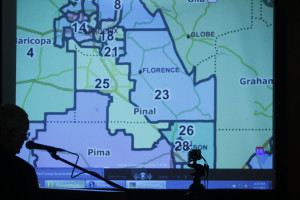 By Adam Liptak | The New York Times
By Adam Liptak | The New York Times
The Supreme Court ruled on Monday that Arizona’s voters were entitled to try to make the process of drawing congressional district lines less partisan.
Justice Ruth Bader Ginsburg wrote the majority opinion in the 5-to-4 decision. She was joined by Justices Anthony M. Kennedy, Stephen G. Breyer, Sonia Sotomayor and Elena Kagan.
The case, Arizona State Legislature v. Arizona Independent Redistricting Commission, No. 13-1314, concerned an independent commission created by Arizona voters in 2000. About a dozen states have experimented with redistricting commissions that have varying degrees of independence from the state legislatures, which ordinarily draw election maps. Arizona’s commission is most similar to California’s.
Comments by Hugh Hallman, chairman of Rose Law Group Litigation Department:
In a 5 to 4 decision, in which the new “swing” vote, Justice Kennedy, joined, the United States Supreme Court upheld Arizona’s Independent Redistricting Commission, which draws the boundaries of Congressional Districts. The court’s opinion holds that the U.S. Constitution’s reference to the “Legislature” includes enactments by the people of Arizona. Arizona’s Independent Redistricting Commission was adopted by Arizona voters through an initiative passed in 2000. The court ruled that, although the initiative powers were not directly contemplated by the framers of the Constitution, the founders viewed the “people” as the original source of lawmaking power. Arizona’s Constitution adopted the “initiative” as a means by which the people of Arizona could exercise that power. It would be a contradiction, says the court, for it to overturn Arizona voters’ decision to exercise their direct lawmaking power to create the Independent Redistricting Commission. Accordingly, Arizona’s current Congressional districts will remain as they are.












